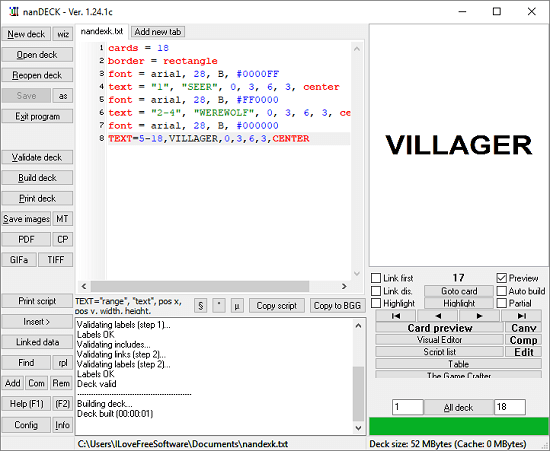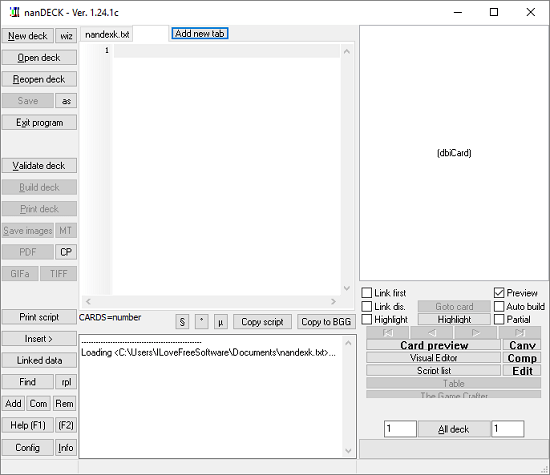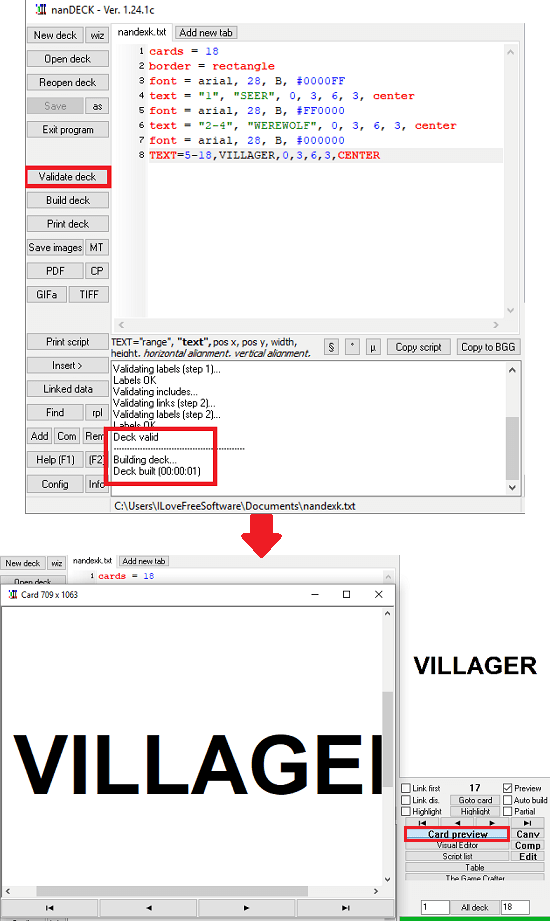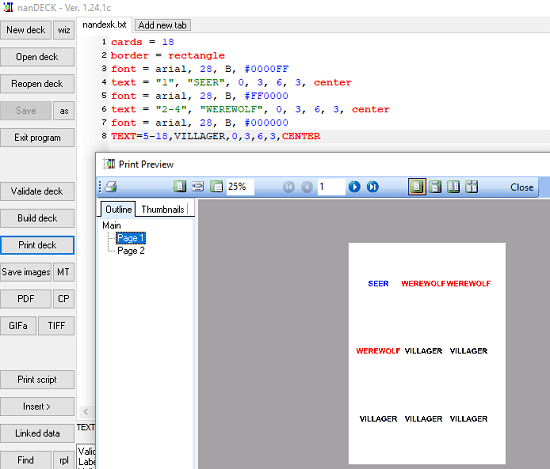nanDECK is a free scripting graphic software to generate custom cards. Here it lets you generate cards for different games or other purposes from a template. It uses a very simple scripting language as an input to generate the cards. Basically, it takes a card template from you with parameters like text, border, type of card, font settings, etc. And the best part is that, you can supply these details from a spreadsheet file as well, say Excel. Using this software, you can generate any number of cards and then save output in a PDF file. To get the actual cards, you can print those PDF files using a colored printer.
To frequently generate custom cards, this is the right software. You can easily generate any number of cards based on the template you have. You just have to write a few lines of code or you can use a simple template that I will mention later. Use that to generate almost any kind of cards. You just need a template file or script and then it will take care of the rest. You can customize each and every parameter of the card with this software and then generate the final PDF file that you can print to get the cards.

Using this Free Scripting Graphic Software to Generate Custom Cards:
Using nanDECK can be difficult at first but once you understand how it works, it will be so much easy for you to use. There is a very simple interface of this software. You just have to specify some options and it will do the rest by itself. The scripting language that it uses can easily be understood after using it a couple of times.
Install this and then simply open it up. You can use its installer version or portable version to get things done. After downloading it, simply run it and its interface will show up which is very simple to the interface of text editors.

In the text area of the software, you enter a script to generate cards. After typing the script, validate it, and build it. You can review that card it generates and if something is not right then you can fix that. As an example you can use the following script to generate simple cards using this tool. This script will generate 18 cards. In those 18 cards, 14 cards will have text “VILLAGER”, 3 cards will have text “WEREWOLF” and 1 will have text “SEER”. You can also see how to specify the font parameters like color, weight, and position.
cards = 18
border = rectangle
font = arial, 28, B, #0000FF
text = "1", "SEER", 0, 3, 6, 3, center
font = arial, 28, B, #FF0000
text = "2-4", "WEREWOLF", 0, 3, 6, 3, center
font = arial, 28, B, #000000
text = "5-18", "VILLAGER", 0, 3, 6, 3, center
You can simply paste this code in the editor of the software. Next, hit the “Validate deck” button and it will analyze your script. Now, you will notice that “Build” option is active since the script is valid. Simply hit the “Build deck” button and it will generate the whole deck for you in a few seconds. See the preview of the cards it generates using the options on the right panel of the software.

Now if everything looks perfect, you can directly print the deck. Use the “Print deck” button to open the print preview of the cards and then simply print them. Or, you can print them using Microsoft Print option to save them as a PDF.

This was a basic example of using this software to print custom cards. There is another option to use this software to generate cards using an Excel file. Additionally, you can use image files as card templates too. For using a spreadsheet to generate cards, you can see this video.
The above video will help you understand more about this software. You can go through this or you can also read the advanced usage guide that it has on its homepage. And if you just want to generate some basic cards then you can use the code that I mentioned above. You just modify that code according to your needs and then simply build a new deck of cards for you.
Final thoughts
nanDECK is really a useful software to generate almost any type of cards. Also, the best part is that you can use custom templates and serve data from a spreadsheet. So, Generate cards in any number and then simply save them as PDF or print them directly. You can save the script corresponding to different decks of cards to a file for later use.